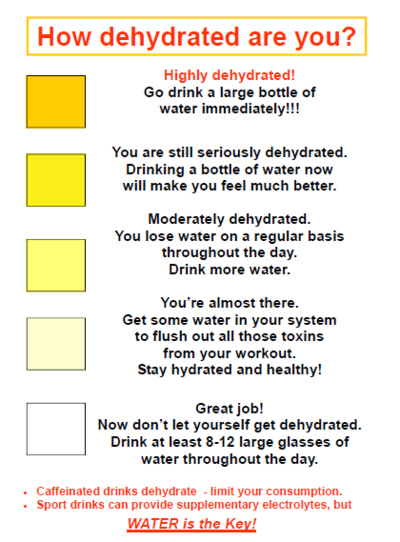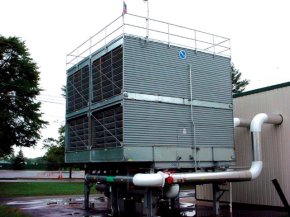via angelafitness.tumblr.com
Is Dehumidifier Water Safe to Drink?
Side view of dehumidifier (Engineering 435 University of Tennessee at Chattanooga November 19, 1996)
I read this question in a forum and I was totally surprise at the many “yes” replies and the fact there were no good answers. Not one person wrote “no.”
Here is the non-politically correct answer: “It depends.”
The reason is that dehumidify water is consider “grey water” not pure water because of the mechanic process that it goes through to become liquid H2O. There is a chance of lead, mold and other nasties residing in the Dehumidifier receptacle water.
Take the time and not waste the water by filtering (99%) and purifying(100%) it before consumption.
5 Ways to Treat Water
Untreated water can contain bacteria and other microorganisms that can mess up your day or take you out of the game. Take the time to treat your water and save yourself from backdoor trots.
Boiling Will kill everything is an easy and cheap way that requires no special equipment. There is however, a challenge and that is you have a source of heat to boil the water.
Chlorine dioxide kills everything and is cheap, easy to use and light to carry. One of the most important qualities of chlorine dioxide is its high water solubility, especially in cold water. The 4 hours and 30 minutes that you have to wait for it to kill Giardia and to neutralize cryptosporidium can be used for other activities. Oh, did I mention that there is a taste?
Filter Kills bacteria and protozoa fast with no funny taste but water filters can be bulky, pricey and will require field maintenance.
Ultraviolet light I have never used one of these personally but Ultraviolet light devices kills everything fast, light to carry and is not supposed to leave a taste. Ultraviolet lights are pricey and requires batteries.
Float Sump Pump
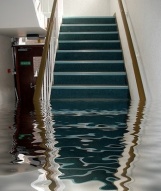 Have you faced the embarrassing situation where you were forced to call a professional to fix a small problem in your float sump pump? The guy is able of fix the problem in no time and you end up feeling a bit stupid and wish that you had a better idea of how your float sump pump works. If you have faced this situation before, you probably don’t want to face it again. Well here is your chance.
Have you faced the embarrassing situation where you were forced to call a professional to fix a small problem in your float sump pump? The guy is able of fix the problem in no time and you end up feeling a bit stupid and wish that you had a better idea of how your float sump pump works. If you have faced this situation before, you probably don’t want to face it again. Well here is your chance.
Your float sump pump is there to make sure that your basement doesn’t get flooded. Due to many reasons however, these devices tend to break down and you come home at the end of the day to find a minor flood situation. Many people may have experienced this situation.
The float switch is probably the most important thing in any pump of this type. A ‘float switch failure’ is probably the main reason for 90% of problems you have to face due to your float sump pump breaking down. Make sure that you know how replace the float switch. You might have to do so once in a while, so try to get a float sump pump in which the float switch can be easily replaced. You would have to go through reviews about these products and talk to the salespeople if you are to find such a pump. There can be various small pieces of wood or dirt in the water which can hinder the activity of your float switch. You can get your float sump pump to work again by removing these things if debris is the cause of the problem.
You might be able to save quite bit of money by doing these kinds of small repair work on your own. Most importantly, you wouldn’t have to wait for hours till your float sump pump is fixed, at times when you find it hard to find anyone to do the job for you. Getting a basic idea of these kinds of things might come in handy at a time you might never expect.
Some float sump pump switches are somewhat expensive. The switch could cost you more than $120 if you are looking for a well known brand. Some switches however, could be bought for $40. Keep in mind that your float sump pump switch should not be too hard to replace. Don’t think only about the price and regret your choice later.
Get an understanding of the basic and the most common types of float sump pump problems. Learn what you should do in such cases. Remember not to try anything that you are not sure of because it could worsen the problem. You should bear in mind that sometimes your float sump pump might just stop working because it has broken down with age. You probably would not be able to use even the best float sump pump for more than 10 years.
What is a Battery Sump Pump
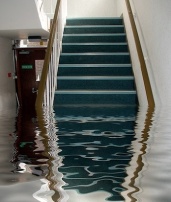 Battery sump pumps are used to remove water or other liquids which gets accumulated in sump pits or other small crevices. These battery sump pumps are mostly used in the basements of houses where water from the upper floors gets collected. A common battery sump pump has a covering which does not allow anything to seep inside. These pumps can be either installed by the user or have it installed by a professional which can be expensive. There are two types of sumps which are the stationary sump pumps and portable sump pumps. Battery sump pumps are usually portable.
Battery sump pumps are used to remove water or other liquids which gets accumulated in sump pits or other small crevices. These battery sump pumps are mostly used in the basements of houses where water from the upper floors gets collected. A common battery sump pump has a covering which does not allow anything to seep inside. These pumps can be either installed by the user or have it installed by a professional which can be expensive. There are two types of sumps which are the stationary sump pumps and portable sump pumps. Battery sump pumps are usually portable.
The price of the battery sump pumps depends on the horsepower of its motor and the make. The horsepower of these battery sump pumps range from 1/6th to ½ HP and the prices of these pumps range from sixty to six hundred dollars. But, what is most important to consider when buying a battery sump pump is the number of gallons per hour or the number of gallons per minute a pump is able to suck out. Most battery sump pumps are able to suck out liquids containing small solids without stalling its motor, which makes it a much more versatile piece of equipment.
Another important feature of the battery sump pump is that it’s portable and can be carried out to places which do not even have electricity. This is one main reason the municipality council uses this piece of machinery to clean out small sewer systems which are blocked with sewage. It is small and hence can be carried to the exact location where it is needed. Since it does not have any wires attached people who use this machine can easily maneuver it while at work. The battery sump pump is most beneficial to people who live in an area where there is frequent power cuts. Some of this battery pump also comes with an automatic battery recharger. This battery recharger keeps the battery recharged even if the pump has not been used for years. It is made sure by the manufacturers that this battery charger never over charges the battery.
The materials which the battery sump pump is made of also affects the price of the pump such as cast bronze, stainless steel, polypropylene and other plastics go into making this pump. Also maintaining a battery sump pump is not easy; it needs constant looking after and care. The material which gets clogged up in the sump should be removed frequently before it packs up and troubles the motor of the battery sump pump.
Mostly these battery sump pumps are made to work simultaneously with the bigger main pump. The much smaller battery sump pump kicks in whenever the main pump malfunctions and acts as a backup.
Livestock Drinking Water Treatment
Drinking water should be clean and safe. Regardless of who drinks it, it is necessary the water is safe and clean. Among livestock, cows, the source of milk and milk products in the U.S. also needs to drink clean and safe water.
The quality of water is crucial to the production of milk among cows. It is noted that a cow can consume up to 25 gallons of drinking water everyday, however the amount can get lesser if the quality of water it drinks is poor, meaning it is being contaminated which affect the odor and taste.
Drinking water contaminated with harmful microorganisms can likewise affect the milk production of dairy cows. It is of paramount importance that the drinking water for cows is free from water-borne microorganisms that can pose danger to cows’ health. With this concern the need for an effective livestock drinking water treatment because urgent.
In dairy farms, where all microorganisms can harbor anytime which makes the cow’s prone to diseases should be prevented. Drinking water troughs must be kept clean because these water receptacles are the breeding grounds of some coliform bacteria which do not only infect cows but humans too. Livestock drinking water treatment should include this concern.
According to Ray Hozalski of the Department of Civil Engineering, University of Minnesota, livestock drinking water treatment might be costly depending on the contaminants that is targeted to eliminate. If the target of the livestock drinking water treatment is to kill the harmful microorganisms, what might be needed is just disinfection. What will be needed is desirable amount of chlorine to disinfect the water; this could be a little affordable compared with other water treatment methods.
Ultraviolet light, which no longer need chemical in treating drinking water, is another option. Ultraviolet light has its own limitation however on turbid water, water residue is not included in the disinfection process. Distillation like reverse osmosis is used in the removal of nitrate and sulfate content in water, however the former is not well patronized because it is costly.
There other factors that need to be considered in treating drinking water for livestock. Salinity and toxicity of the water must be tested. Too much salinity in drinking water can disrupt the water balance in cows, which might possibly lead to death. Toxic ions can also be detrimental to the health of cows.
Dairy farm owners should make sure that the drinking water treatment procedure for livestock, specifically for cows, should be on top of the priority list. It is important that livestock like cows drink only clean and safe water. This is to ensure that dairy farm owners and the public can both enjoy quality dairy products.
Magnet Water Treatment
If you are one of those people who are concerned about the quality of water they drink, then you may have encountered the phrase “magnet water treatment” before. But what is it?
First, let’s try to understand what water treatment is. It is a system by which water contaminants, whether naturally occurring or not, are removed from your water supply in order to improve its quality, safety level, taste, odor, and appearance.
There are many different methods used to treat water. Magnet water treatment is just one of them. In a magnet water treatment system, water is made to pass through a strong magnetic field and by doing so, its quality is altered for the better.
In a magnet water treatment system, magnets or other magnetic devices are attached to the incoming water pipe of your home or business. Installing a magnet water treatment system in your home can greatly reduce maintenance cost of your water supplies. The system can also be used in industrial applications, such as boilers, cooling towers, and other such appliances.
Why use magnet water treatment?
Water is a universal solvent. As it moves along ground surfaces, it dissolves minerals and other compounds. Calcium and magnesium are particularly susceptible to water, and once dissolved, they remain in the water, thereby creating a new solvent commonly referred to as “hard water.” The term simply means that the water has high mineral content.
Hard water is not harmful to people’s health. In fact, you can drink it just fine, without any funny taste or odor. What makes hard water a problem is that it has the tendency to cause scale formation along the interior surfaces of water pipes and other water-bearing devices.
The more scale build up is created, the lesser the efficiency of these devices becomes. Eventually, the mineral build up will cause the water pipes to clog completely until water cannot pass through anymore.
It costs a lot of money to remove scale build up from these water-bearing appliances. In industrial applications, 70% of maintenance cost of boiler systems is spent on removing scale deposits alone.
Moreover, hard water lessens the effects of soap. The high mineral content causes a reaction in soap so that it does not lather as effectively as it would have in “soft” water. This can be a problem for those who use soap when washing.
Using magnet water treatment can help solve these two problems. By altering the chemical composition and behavior of the minerals, a magnet water treatment system has the effect of “softening” the water.
Basically, a magnet water treatment system replaces calcium and magnesium in the water with sodium. Compared with calcium and magnesium, sodium has lesser adverse effects on water. What’s more, sodium does not react with soap and does not cause scale formation either.
Well Water Treatment Systems
Water is essential for every day life. Not only that, but what is essential is clean water. If your water comes from a public or municipal system, then you should have little to worry about in terms of how safe or healthy your water is for use. There are state and local regulations that set standards for the quality of water that comes out of these systems. Water tests are regularly conducted to ensure that water is safe for drinking.
On the other hand, if your water comes from a private well or community well, then the responsibility of keeping it safe for human consumption is usually left in the hands of the end-users. This is where well water treatment systems come in.
Why use well water treatment systems?
While there are naturally-occurring contaminants in water that are not necessarily harmful to your health, there are other types of contaminants that are extremely hazardous. These contaminants contain toxic compounds that can kill animals, plants, and even humans.
Well water belongs to that group of water sources that are considered as “highly vulnerable” to contamination. This is especially true with water coming out of a poorly constructed well, or well that is located near a waste disposal area, such as a septic tank. There is danger of waste seeping through and mixing with the groundwater from which you draw your water.
Moreover, if your well has periodic episodes of poor water quality, then there is also a likely chance that your water supply may be susceptible to harmful bacteria and other contaminants.
Good well water treatment systems are those that can reduce, if not completely remove, these harmful contaminants in water so it is clean and safe for drinking. They help maintain the supply of high quality water, free of any harmful bacteria and other contaminants.
Choosing Between Well Water Treatment Systems
There are many different kinds of well water treatment systems. The effectiveness of each one depends entirely on the type of contaminants found in your well water supply. For instance, if your well is located near a sewage disposal area, then you need a treatment system that employs the sewage treatment method, wherein the water undergoes several stages of processing before it can be considered as safe for use.
American Hydro Systems TEST-8 Do It Yourself Well Water Test Kit
There is not one single well water treatment system that can treat all types of water. Others may be more effective with a particular type of water source while the rest are not quite so.
This is important to keep in mind when choosing well water treatment systems. Be sure to choose a well water treatment system that conforms to your water needs. Only in doing so will you be certain that water from your treatment system is safe.
Cooling Tower Water Treatment
The maintenance of cooling tower water quality is a significant, though often overlooked, issue in water treatment systems. Water, whether it comes from cooling towers or your regular faucet, supports biological growth over time. Moreover, if left unattended for a long time, it may corrode or form scale deposits on equipment. This is why a cooling tower water treatment system is needed.
Problems Caused by Poor Cooling Tower Water Maintenance
When cooling tower water is poorly maintained, it can give rise to a range of problems, such as the following:
Scale Formation
Scale is formed from precipitated solids, which are commonly produced from heating or cooling water with high mineral content. As scale deposits build up on heat exchange surfaces, they have the tendency to reduce the system’s efficiency. Moreover, the scale formation may also block the flow of water from the cooling tower’s basin or fill.
Using a cooling tower water treatment system can help prevent the build up of scales. It is a cost-effective method that not only treats the problem but also has the effect of reducing maintenance cost of the cooling tower system. Majority of maintenance cost of cooling towers are spent on the removal of scale deposits.
Corrosion
Corrosion occurs when metal dissolves. Under the effects of oxidation, a substantial part of the metal breaks down, leading to a premature degradation of the system. Basically, the metal degrades, its strength and thickness reduced, its structural integrity compromised, and in some extreme cases, it may even create pits and holes in the material.
A cooling tower water treatment system that prevents corrosion is in order. One such system that is effective in preventing corrosion is ozone treatment. However, there are other methods available as well.
Biological Fouling
Biological fouling occurs when water has been left unattended for a long time. Bacteria, algae, fungi, and even protozoa are fond of water and will grow when water has been left untouched for a time. Eventually, the accumulated population of microorganisms in the water will result in the formation of biological film, which is difficult to remove. This creates a situation, commonly referred to as “biological fouling.”
Out of all cooling tower water problems, this is considered to be the root. Among the adverse effects of biological fouling are reduced heat transfer efficiency, fouling of cooling tower fill, blockages in water flow, as well as microbiological induced corrosion. It may also result in human health concerns.
Using a cooling tower water treatment system eliminates this problem. A good cooling water treatment system removes bacteria, fungi, viruses and other biological contaminants in the water and prevents them from fouling the water. Removal of these contaminants, in turn, improve the quality of the water flowing out of the cooling tower.
Making Use of Rainwater
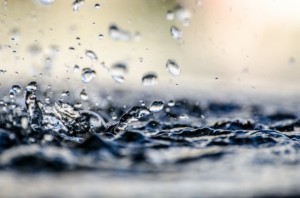 Rainwater is a “natural commodity” that most people take for granted and that this valuable commodity is given to us to use freely by nature. Collecting rainwater for use is one of the easiest systems for a person to set up. Although rainwater is not recommended for drinking, it is perfectly acceptable for many other uses. Once a home water recycling system is in place, the rainwater run-off can be used in gardens, lawns, pools and even for indoor tasks, such as laundry and dish washing. This will help to conserve the water that comes from city water supplies and private wells and will cut down on the bills that are amassed by users for these services. Collecting Rainwater for Water Recycling Collecting rainwater for water recycling can be done in several different ways. At its simplest, shortening the downspouts that come from the gutters on your home and placing a watertight barrel underneath can collect a large amount of rainwater throughout the year, depending on the area in which you live. Using a tarpaulin to collect additional rain and draining it into a barrel is also a popular choice. This water can then be dipped out, as needed or drained through a hose, if the barrel has a tap. There are many companies that have developed products that were specifically made for rainwater collection and water recycling. These professionally installed systems can be used by residential homes to collect water for non-potable uses and some include water purifying systems that can create potable water from rainwater, in some instances. There are commercial systems available as well, that are meant for use in the landscaping and agricultural communities and other industries where large amounts of water are used on a regular basis. As water recycling is a very important step in the fight to keep the planet a safe and healthy place to live, considering installing a rainwater collection system is a great decision for people to make. Though it may seem simpler to get water from conventional sources, it is important to remember that water conservation is a serious issue. Using water recycling tactics, such as collecting rainwater, can help to reduce the amount of water that is wasted by consumers and companies each year.
Rainwater is a “natural commodity” that most people take for granted and that this valuable commodity is given to us to use freely by nature. Collecting rainwater for use is one of the easiest systems for a person to set up. Although rainwater is not recommended for drinking, it is perfectly acceptable for many other uses. Once a home water recycling system is in place, the rainwater run-off can be used in gardens, lawns, pools and even for indoor tasks, such as laundry and dish washing. This will help to conserve the water that comes from city water supplies and private wells and will cut down on the bills that are amassed by users for these services. Collecting Rainwater for Water Recycling Collecting rainwater for water recycling can be done in several different ways. At its simplest, shortening the downspouts that come from the gutters on your home and placing a watertight barrel underneath can collect a large amount of rainwater throughout the year, depending on the area in which you live. Using a tarpaulin to collect additional rain and draining it into a barrel is also a popular choice. This water can then be dipped out, as needed or drained through a hose, if the barrel has a tap. There are many companies that have developed products that were specifically made for rainwater collection and water recycling. These professionally installed systems can be used by residential homes to collect water for non-potable uses and some include water purifying systems that can create potable water from rainwater, in some instances. There are commercial systems available as well, that are meant for use in the landscaping and agricultural communities and other industries where large amounts of water are used on a regular basis. As water recycling is a very important step in the fight to keep the planet a safe and healthy place to live, considering installing a rainwater collection system is a great decision for people to make. Though it may seem simpler to get water from conventional sources, it is important to remember that water conservation is a serious issue. Using water recycling tactics, such as collecting rainwater, can help to reduce the amount of water that is wasted by consumers and companies each year.

